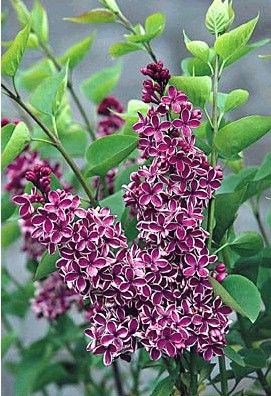How to Grow and Care for Lilacs – Gertens Lilacs
There are 1000s of varieties of Lilacs, Syringa, that come in a variety of colors and sizes, but they all have that scent we love. Read on to learn how to grow and care for lilacs, specifically Gertens’ lilacs.
 |
|
Lilacs are known for the ability to grow and flourish in colder climates.
|
These plants are known for their ability to grow and flourish in colder climates due to their need for a period of cold-initiated dormancy to trigger their flowering mechanism. Lilacs date back to the 1750’s in America when George Washington planted them in his garden, but they are native to Europe and Asia.
We term the European native lilac (Syringa vulgaris) as a French hybrid after the French nurserymen who often chose this plant to grow and plant. Varieties like the Common Purple, Common White, Charm, Glory, President Lincoln, and many more lilac varieties fall into this category.
Asian lilacs like the Miss Kim (Syringa patula ‘Miss Kim’) and the Dwarf Korean (Syringa meyeri ‘Palibin’) are used for their compact growth and height.
Uses
- Lilacs can be used as a spring specimen plant, accent plant, as a screen or loose hedge.
- The flowers are so fragrant, some varieties more than others, that they are great for cut flowers to bring inside or as a marked sign of spring in your garden.
Care
- Well-drained site.
- Either full sun or part shade.
- Any soil type and will do better with the addition of peat moss and organic fertilizers at planting.
- You can use a high phosphorus fertilizer in spring to promote blooms, but lilacs do not need consistent fertilizer to bloom or grow. Too much nitrogen can decrease the amount of blooms.
Pruning and Maintenance
- Prune back spent flower blossoms in early spring, immediately after they are finished blooming. Lilacs set their buds a year in advance in late spring/early summer. Cosmetic pruning should be done every year to keep the plants shape.
- Lilacs are not to be trimmed like a hedge, otherwise you may lose a whole year’s worth of blooms.
- Older Lilacs: Three Year Plan.
- 1st year: Prune 1/3 of the shrubs each year, taking out the large oldest stems only. Cut them to just above the soil line. This will allow new shoots to grow in the place of old ones.
- 2nd year: Prune 1/2 of the remaining old stems in spring. Prune out any new stems that will not contribute to the final look of the plant.
- 3rd year: Prune out the remaining old stems in spring. Remove any new shoots that are not needed.
Lilacs need 3 years to bloom off of new wood. The three-year plan lets you rejuvenate and reshape your lilac without loosing blooms. Continue this process every few years and only cut 1/3 of the shrub’s oldest wood in spring.
Pests and Disease
- Insect pests are not a problem unless the plant is under stress.
- Moles, mice, and voles will chew the bark in a hard winter and can girdle and kill the plant.
- Powdery mildew is the most common ailment of the lilac. A white powder will form on the tops of the leaves. Good ventilation and a low stress environment can help decrease the possibility of this occurring. The mildew does not harm the plant permanently and it is mostly aesthetically unpleasing. Any fungicide that specifies powdery mildew can be applied to the plant during the summer months when the mildew is most active.
